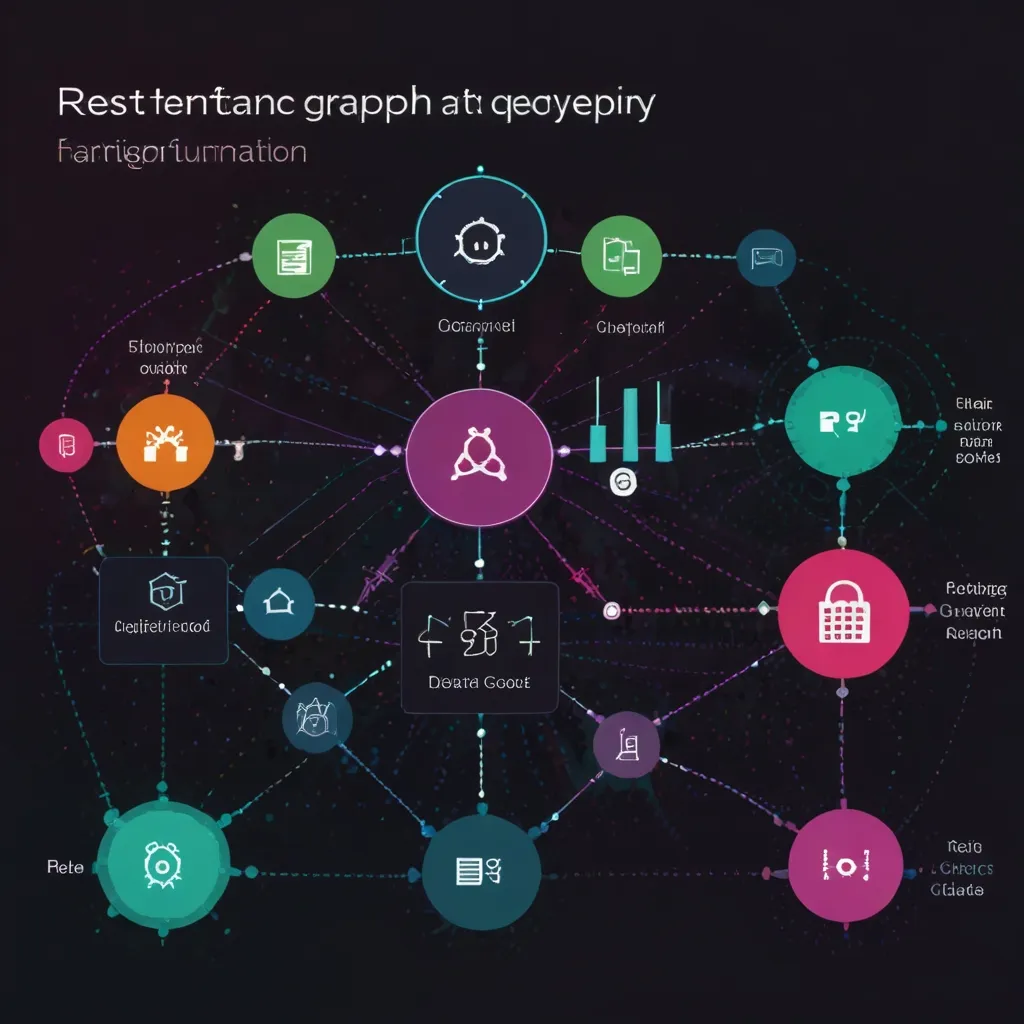The complexity of today’s web applications demands testing strategies that go beyond simple unit tests. Real users interact with software in unpredictable ways, across different browsers, devices, and network conditions. I’ve found that end-to-end testing provides the most realistic simulation of these interactions, catching integration issues that isolated tests often miss.
Playwright has become my go-to tool for this type of testing. It offers a consistent API across multiple browsers, including Chromium, Firefox, and WebKit. What sets it apart is its ability to handle modern web challenges like single-page applications, iframes, and complex user interactions with remarkable reliability.
Setting up Playwright begins with a simple installation. I typically start by adding it to a project using npm or yarn. The initial configuration happens through a playwright.config.js file, where I define timeouts, retry strategies, and browser settings. This configuration becomes the foundation for all subsequent tests.
// Installation and basic setup
npm init playwright@latest
// Sample package.json dependencies
{
"devDependencies": {
"@playwright/test": "^1.25.0"
}
}
Writing my first test felt surprisingly intuitive. The API follows patterns that make sense for web interactions. I can navigate to pages, interact with elements, and make assertions about the application state. The automatic waiting mechanism eliminates many of the timing issues that plague other testing tools.
// Basic navigation and interaction
const { test, expect } = require('@playwright/test');
test('homepage has correct title', async ({ page }) => {
await page.goto('https://my-app.com');
await expect(page).toHaveTitle('My Application');
});
test('search functionality works', async ({ page }) => {
await page.goto('https://my-app.com');
await page.fill('#search-input', 'test query');
await page.click('#search-button');
await expect(page.locator('.results')).toContainText('test query');
});
Authentication testing requires special consideration. Most applications protect certain routes behind login screens. I create helper functions to handle authentication across multiple tests. This keeps my test code clean and maintainable.
// Authentication utility
async function loginWithTestUser(page) {
await page.goto('/login');
await page.fill('#email', '[email protected]');
await page.fill('#password', 'testpassword');
await page.click('#submit');
await page.waitForURL('/dashboard');
}
test('authenticated user sees dashboard', async ({ page }) => {
await loginWithTestUser(page);
await expect(page.locator('.welcome-message')).toBeVisible();
await expect(page).toHaveURL('/dashboard');
});
Form testing covers one of the most critical user interactions. I test various form states, including validation errors, successful submissions, and edge cases. Playwright’s selectors make it easy to target specific form elements reliably.
// Comprehensive form testing
test('contact form validation', async ({ page }) => {
await page.goto('/contact');
// Test required field validation
await page.click('#submit-form');
await expect(page.locator('.name-error')).toContainText('Required');
await expect(page.locator('.email-error')).toContainText('Required');
// Test invalid email format
await page.fill('#email', 'invalid-email');
await page.click('#submit-form');
await expect(page.locator('.email-error')).toContainText('Invalid email');
// Test successful submission
await page.fill('#name', 'Test User');
await page.fill('#email', '[email protected]');
await page.fill('#message', 'Test message content');
await page.click('#submit-form');
await expect(page.locator('.success-message')).toContainText('Thank you');
});
Dynamic content and API interactions present unique testing challenges. Modern applications often load data asynchronously, making timing crucial. Playwright’s waiting strategies handle these scenarios effectively.
// Testing dynamic content
test('user profile loads dynamic data', async ({ page }) => {
await loginWithTestUser(page);
await page.goto('/profile');
// Wait for API data to load
await page.waitForSelector('.user-data-loaded');
const userName = await page.textContent('.user-name');
const userEmail = await page.textContent('.user-email');
expect(userName).toBe('Test User');
expect(userEmail).toBe('[email protected]');
});
Mocking API responses allows me to test specific scenarios without depending on external services. This is particularly useful for testing error states or edge cases that might be difficult to reproduce with real APIs.
// API response mocking
test('handles server error gracefully', async ({ page }) => {
// Intercept API call and mock error response
await page.route('**/api/user/data', route => {
route.fulfill({
status: 500,
contentType: 'application/json',
body: JSON.stringify({ error: 'Internal server error' })
});
});
await loginWithTestUser(page);
await page.goto('/dashboard');
await expect(page.locator('.error-message'))
.toContainText('Unable to load data');
await expect(page.locator('.retry-button')).toBeVisible();
});
File uploads and downloads require special handling in tests. Playwright provides clean APIs for both scenarios, making it possible to test these common web application features thoroughly.
// File upload testing
test('user can upload profile picture', async ({ page }) => {
await loginWithTestUser(page);
await page.goto('/profile/edit');
const fileInput = page.locator('input[type="file"]');
await fileInput.setInputFiles('tests/fixtures/avatar.jpg');
await page.click('#upload-button');
await expect(page.locator('.upload-success')).toBeVisible();
});
// File download testing
test('user can export data', async ({ page }) => {
await loginWithTestUser(page);
await page.goto('/reports');
const downloadPromise = page.waitForEvent('download');
await page.click('#export-button');
const download = await downloadPromise;
expect(download.suggestedFilename()).toContain('.csv');
await download.saveAs('downloaded-file.csv');
});
Cross-browser testing remains essential despite modern browsers’ increasing standardization. Playwright makes this straightforward by allowing me to run the same tests across multiple browsers with minimal configuration changes.
// Cross-browser configuration
// playwright.config.js
module.exports = {
projects: [
{
name: 'Chromium',
use: {
browserName: 'chromium',
viewport: { width: 1920, height: 1080 }
}
},
{
name: 'Firefox',
use: {
browserName: 'firefox',
viewport: { width: 1920, height: 1080 }
}
},
{
name: 'WebKit',
use: {
browserName: 'webkit',
viewport: { width: 1920, height: 1080 }
}
}
]
};
Mobile testing requires emulating different devices and touch interactions. Playwright’s device emulation features let me test responsive designs and mobile-specific interactions without maintaining physical devices.
// Mobile device testing
test('mobile navigation works', async ({ page }) => {
// Emulate mobile device
await page.setViewportSize({ width: 375, height: 812 });
await page.goto('https://my-app.com');
// Test hamburger menu interaction
await page.click('.menu-toggle');
await expect(page.locator('.mobile-menu')).toBeVisible();
// Test touch interactions
await page.tap('.menu-item');
await expect(page).toHaveURL('/mobile-page');
});
Accessibility testing ensures applications remain usable for people with disabilities. I integrate accessibility checks into my end-to-end tests to catch issues early in the development process.
// Accessibility testing
test('page meets accessibility standards', async ({ page }) => {
await page.goto('/home');
// Run automated accessibility checks
const accessibilitySnapshot = await page.accessibility.snapshot();
// Check for critical accessibility issues
expect(accessibilitySnapshot).toHaveNoViolations({
rules: {
'color-contrast': { enabled: false } // Disable flaky color contrast checks
}
});
// Test keyboard navigation
await page.keyboard.press('Tab');
await expect(page.locator(':focus')).toHaveAttribute('href', '#main-content');
});
Performance testing becomes part of the quality assurance process when using Playwright. I can measure load times and identify performance regressions before they affect real users.
// Performance monitoring
test('page loads within performance budget', async ({ page }) => {
const startTime = Date.now();
await page.goto('/dashboard');
const loadTime = Date.now() - startTime;
// Assert page loads within 2 seconds
expect(loadTime).toBeLessThan(2000);
// Measure specific resource loading
const performanceTiming = await page.evaluate(() =>
JSON.stringify(window.performance.timing)
);
const timings = JSON.parse(performanceTiming);
const domContentLoaded = timings.domContentLoadedEventEnd - timings.navigationStart;
expect(domContentLoaded).toBeLessThan(1000);
});
Test organization and maintainability become crucial as test suites grow. I structure tests logically, using descriptive names and grouping related tests together. Page object patterns help manage complexity in larger applications.
// Page object pattern implementation
class LoginPage {
constructor(page) {
this.page = page;
this.emailInput = page.locator('#email');
this.passwordInput = page.locator('#password');
this.submitButton = page.locator('#submit');
}
async navigate() {
await this.page.goto('/login');
}
async login(email, password) {
await this.emailInput.fill(email);
await this.passwordInput.fill(password);
await this.submitButton.click();
}
}
// Using page objects in tests
test('login with page object', async ({ page }) => {
const loginPage = new LoginPage(page);
await loginPage.navigate();
await loginPage.login('[email protected]', 'password123');
await expect(page).toHaveURL('/dashboard');
});
Continuous integration ensures tests run automatically on every code change. I configure CI pipelines to run Playwright tests across multiple browsers and report results clearly. Failed tests prevent deployment until issues are resolved.
Test data management requires careful planning. I use factory functions to create consistent test data and cleanup routines to maintain a pristine testing environment. This prevents test pollution and ensures reliable results.
// Test data management
async function createTestUser() {
// API call to create test user
const response = await fetch('http://localhost:3000/api/test-users', {
method: 'POST',
headers: { 'Content-Type': 'application/json' },
body: JSON.stringify({
email: `test-${Date.now()}@example.com`,
password: 'testpassword'
})
});
return response.json();
}
async function cleanupTestUser(userId) {
await fetch(`http://localhost:3000/api/test-users/${userId}`, {
method: 'DELETE'
});
}
test('user registration flow', async ({ page }) => {
const testEmail = `test-${Date.now()}@example.com`;
await page.goto('/register');
await page.fill('#email', testEmail);
await page.fill('#password', 'testpassword');
await page.click('#register');
await expect(page.locator('.welcome-message')).toContainText('Welcome');
// Cleanup
await cleanupTestUserByEmail(testEmail);
});
Visual regression testing catches unintended UI changes. I integrate visual testing into my Playwright workflow to ensure consistent appearance across browsers and devices.
// Visual testing
test('homepage looks correct', async ({ page }) => {
await page.goto('/home');
// Compare against baseline screenshot
expect(await page.screenshot()).toMatchSnapshot('homepage.png');
});
test('product page maintains layout', async ({ page }) => {
await page.goto('/products');
// Test specific component appearance
const productCard = page.locator('.product-card').first();
expect(await productCard.screenshot()).toMatchSnapshot('product-card.png');
});
Error handling and recovery testing ensures applications behave gracefully when things go wrong. I simulate network failures, server errors, and other exceptional conditions to verify robust error handling.
// Error recovery testing
test('application recovers from network failure', async ({ page }) => {
// Simulate network offline scenario
await page.context().setOffline(true);
await page.goto('/dashboard');
await expect(page.locator('.offline-message')).toBeVisible();
// Restore network and verify recovery
await page.context().setOffline(false);
await page.click('.retry-button');
await expect(page.locator('.online-content')).toBeVisible();
});
Test reporting and documentation provide visibility into testing efforts. Playwright’s built-in reporters generate detailed test reports that help identify patterns and prioritize fixes.
Maintaining test reliability requires addressing flakiness proactively. I implement retry strategies, use stable selectors, and avoid testing implementation details. Regular test reviews help identify and eliminate unreliable tests.
Test environment management ensures consistency across development, staging, and production environments. I use environment-specific configuration and mock services when necessary to maintain test reliability.
The human aspect of testing remains important despite automation. I focus tests on user journeys that matter most, avoiding excessive testing of trivial functionality. This balance ensures testing efforts provide maximum value.
Collaboration between developers and testers improves test quality. I involve team members in test design and review, creating shared ownership of application quality.
Test maintenance becomes an ongoing process as applications evolve. I regularly review and update tests to reflect application changes, removing obsolete tests and adding coverage for new features.
The return on investment from end-to-end testing becomes clear when considering the cost of production failures. Catching issues early saves time, money, and reputation damage.
Playwright continues to evolve with new features and improvements. Staying current with updates ensures I can take advantage of new capabilities and maintain optimal test performance.
The testing landscape will continue changing as web technologies advance. Maintaining flexible testing strategies and adaptable toolsets prepares me for whatever comes next.
Effective testing requires both technical skill and strategic thinking. I balance comprehensive coverage with maintainability, focusing on tests that provide the greatest value for the effort invested.
The ultimate goal remains delivering reliable, high-quality web applications that meet user needs. End-to-end testing with Playwright provides confidence that applications will work as expected in real-world conditions.
This approach to testing has transformed how I build and deliver web applications. The confidence that comes from comprehensive test coverage allows for faster development and more frequent deployments.
The journey to effective testing continues with each new project. I learn and adapt my approach based on project requirements, team dynamics, and evolving best practices.
The results speak for themselves: fewer production issues, faster development cycles, and happier users. That’s the real value of investing in proper end-to-end testing.





